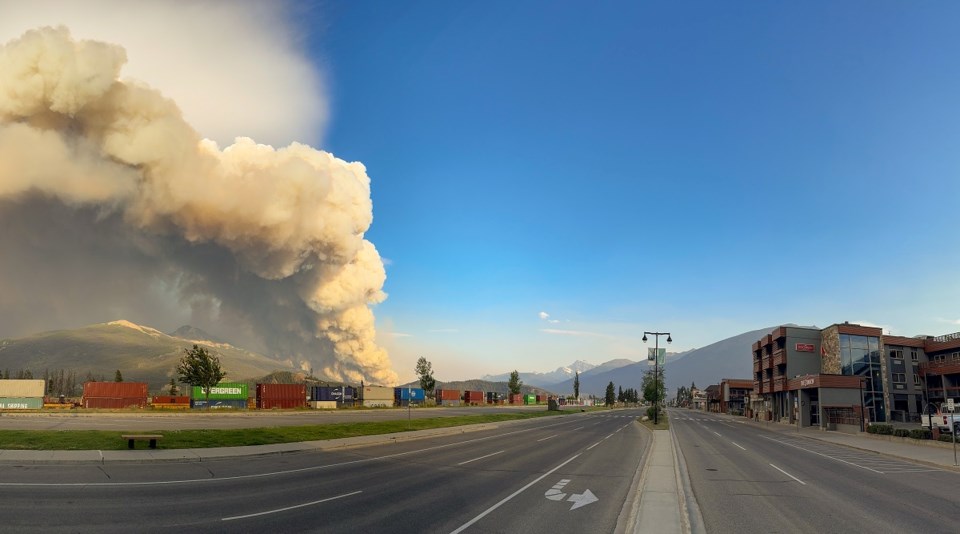Jasper National Park has been preparing for a wildfire event near the townsite of about 5,000 permanent residents for years, if not decades.
Parks Canada formulated a plan to respond to the mountain pine beetle when it swept into Alberta from the west in 1999. Some experts believe the beetle helped set the stage for the mega-fire that would evacuate the town a quarter-century later by turning healthy, moisture-filled live trees to dry timber, in many cases still standing.
In 2015, the same year the Excelsior wildfire forced the evacuation of the Maligne Valley, the Crown agency formed a working group with Natural Resources Canada (NRCAN)/Northern Forestry Centre and the Government of Alberta (Alberta Agriculture and Forestry) to oversee the response to the destructive bug.
By 2018, 1,000 acres of forest around the townsite had been “FireSmarted,” with crews reducing the amount of fuel in the area, dead or otherwise.
July 15-21, 2024: The heat
“We saw really abnormally high temperatures for the week leading up to the fire in that area,” Kaitlyn Trudeau, senior research associate with Climate Central explained. “But we also saw really high Climate Shift Index scores.”
In Jasper, the unusually high temperatures were between two and five times more likely for a sustained period, Trudeau said.
“When you have really high temperatures like that, it dries out the landscape. It dries out the potential fuel and it makes the fuel really hot. So, the ignition temperature doesn't have to heat up much more to ignite when a fire does start.”
Temperature anomalies across the Jasper National Park ranged from about 7C to 10C on July 22, when the fire is believed to have started, according to Climate Central’s research.
July 22: The spark
A lightning storm is believed to be responsible for starting the wildfires north and south of the Jasper townsite. The strikes took place in exceptionally arid conditions, with high winds that fuelled devastating “aggressive, blow-up fire behaviour.”
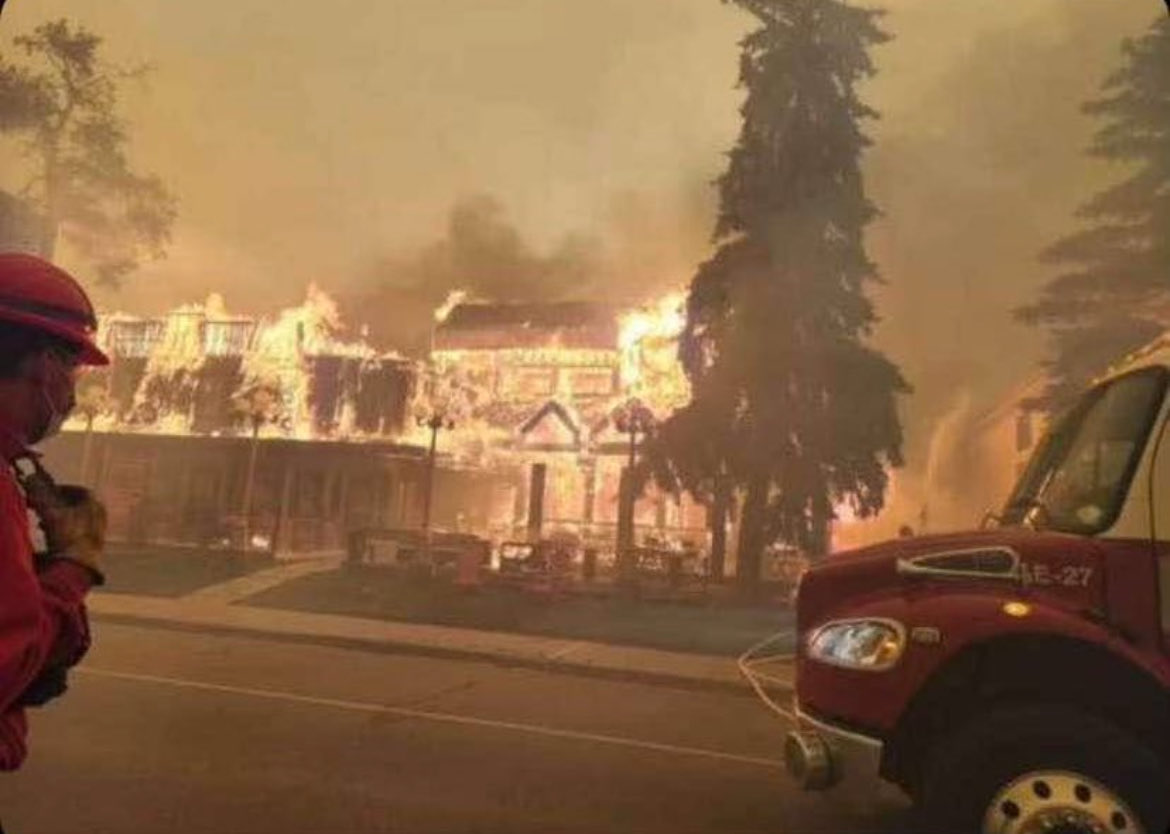
July 23: The march
Wildfires burning north and south of Jasper National Park’s townsite closed in on the population centre as Parks Canada incident management teams focused on protecting visitors and residents still in the park, as well as critical infrastructure.
Officials said the larger wildfire south of the Jasper townsite grew overnight Tuesday (July 23) to 10,800 hectares and was now about eight kilometres away. A 270-hectare fire 5 km north of the mountain town was also still classified as out-of-control, but had not grown since Tuesday.
About 260 firefighters, two water tankers, one off-road water supply, 13 fire trucks and nine aircraft had kept fires from touching the townsite but Parks Canada has confirmed damage to infrastructure along the Icefield Parkway, otherwise known as Highway 93.
July 23: The evacuation
An emergency alert issued by the Municipality of Jasper at first mistakenly warned residents and visitors that the wildfire to the south was expected to reach the townsite within five hours. Corrected, it instead gave residents five hours to prepare to evacuate.
July 24: The breach
Structures in the town’s west end, including the Maligne Lodge, the first of a number of historic buildings that would be consumed, were ablaze by about 6:30 p.m.
All first responders were Jasper National Park and sent to Hinton as the out-of-control fire moving from the south reached the outskirts of the town. Firefighters remained in town and combated spot fires and maintaining sprinkler lines.
“If you have not yet evacuated town you must leave now,” a public notice from Parks Canada incident commander Katie Ellsworth and Municipality of Jasper incident commander Christine Nadon said. “This is for your own safety and to allow these critical operations to protect the town of Jasper to continue unimpeded.”
In an update provided by Parks Canada around 10 p.m., the agency said "significant loss has occurred within the townsite."
July 25: The complex
The Jasper wildfire complex grew to encompass an estimated 36,000 hectares.
"Future maps will change when we can map the perimeter from the air. Because the perimeter of the two wildfires have met, we are now referring to wildfires in Jasper National Park as the Jasper Wildfire Complex," Jasper National Park officials said. The would go on to relay descriptions of a wall of 100-metre flames, a blaze so massive it created its own weather system, a terrifying pyrocumulonimbus cloud that loomed over the park.

July 25: The Jasper Park Lodge
The Fairmont Jasper Park Lodge reported most of its structures were still standing, including the main lodge, built in 1921. The resort, which opened in 1922 and added its iconic golf course in 1925, would lose just 19 of its 121 structures.
According to the resort, two hotel accommodations burned, including Milligan Manor and one Beaver Suite. Several operations buildings have also burned as well as the engineering and golf maintenance shed.
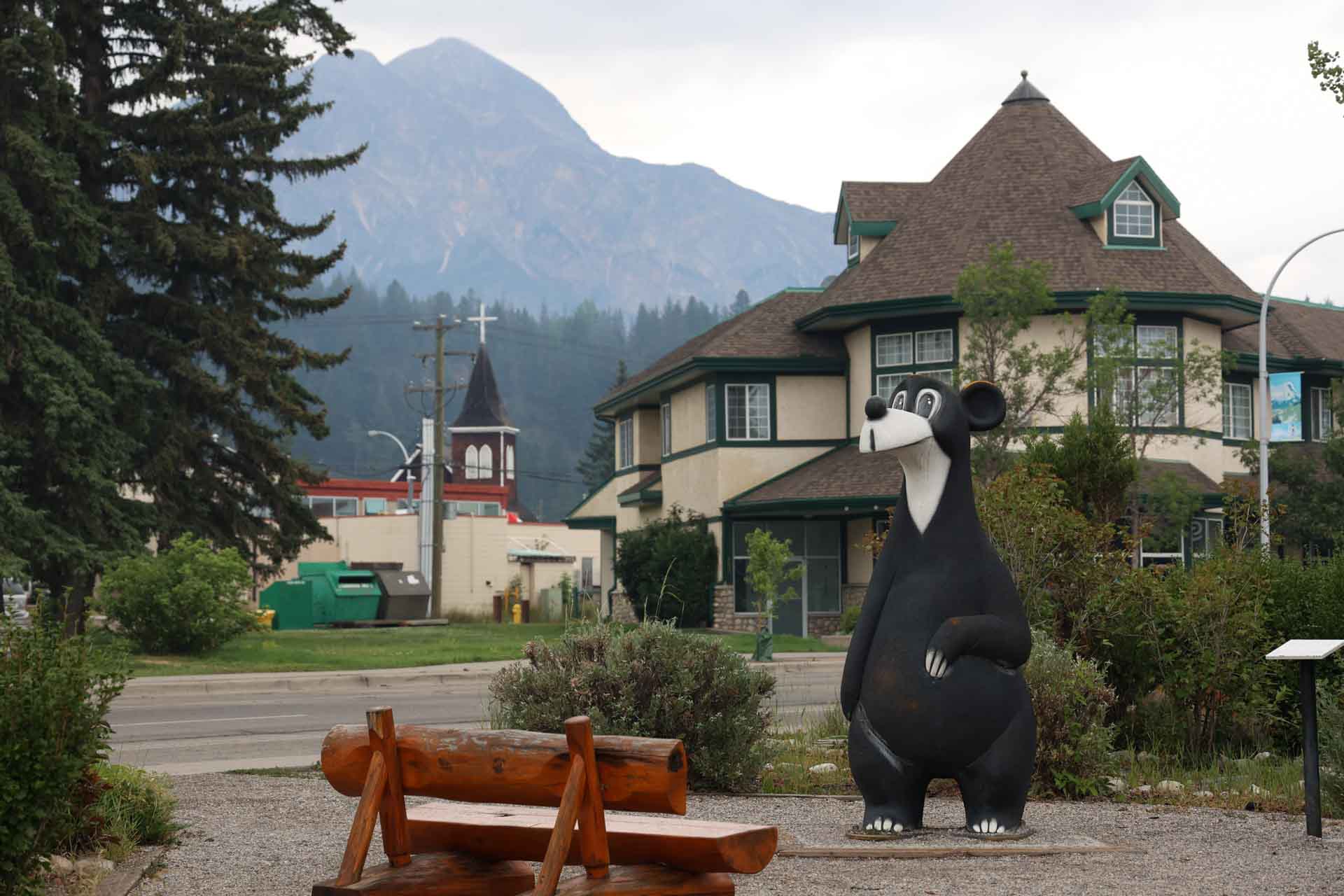
July 26: The bear
Jasper evacuees, any fan of the town really, received a ray of hope when a photo of the famous Jasper the Bear statue was posted to X, still standing after the fire destroyed at least 338 of the townsite’s 1,113 structures.
“That statue, all day long if you care to watch, has people hanging off it taking photos,” Pattie Pavlov, executive director of the Jasper Park Chamber of Commerce, said. “Old folks, young folks, it doesn’t matter," she said. "He is a part of Jasper’s fabric. He provides Jasper with a pulse.”
July 27: The map
The Municipality of Jasper revealed a map and street address sheet of where wildfires have done the most damage within the mountain townsite. Green indicates no visible damage, yellow is visible damage and red is destroyed.
“With evacuees located across multiple communities, staying at centres or with friends and family, we are challenged with the ability to communicate during an evacuation, and this is the most efficient way to reach as many Jasperites as possible.”
July 30: The Mounties
RCMP from across Alberta were pulled into the Jasper region to help with the ongoing disaster response.
Officers started arriving on July 22, helping direct traffic as 25,000 residents and tourists fled the area and conducting door-to-door checks for people left behind. After the evacuation, they focused on security roles, carrying out patrols, restricting access to the area and investigating suspicious activity.
Four RCMP members live in the town of Jasper, according to Trevor Daroux, assistant commissioner with Alberta RCMP.
“They've all been evacuated as well. So, it's important to deal with the trauma, not only of the community, but for our members as well. This is their community. This is, quite frankly, where they live. They're as excited about rebuilding as everyone else.”
July 31: The Marmot
Marmot Basin announced it was “exceptionally fortunate” the fire had spared its operations, giving the many year-round residents of the town who depend on the draw of the alpine a beacon of hope for the recovery effort ahead.
“Our intention is to fully operate for the 2024/25 season,” a statement read. “We appreciate the support of all our loyal skiers and snowboarders and we can't wait to see all your friendly faces on the ski slopes!”
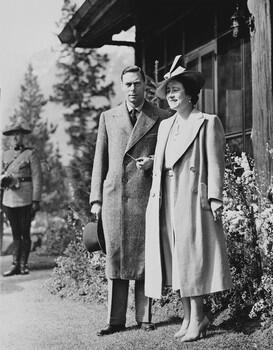
July 31: The monarch
In a statement, King Charles said he was “immensely saddened” by the destruction in Jasper, which members of the royal family visited in 1939 and 2005.
“It is often the most difficult times that bring people and communities closest together. As always, my heartfelt thanks goes to the dedicated first responders — the firefighters, police, healthcare professionals and community volunteers and leaders — who, through their actions and commitment, remind us all of the dedication that lies in public service,” he wrote. “The number of firefighters who have come from across the world to offer their services speaks not only to the sense of solidarity that exists within that professional community, but also the high regard in which Canada and Canadians are held around the world.”
July 31: The mother bear
A well-known grizzly bear and her cubs survived the flames.
Parks Canada officials say the extraordinary instincts of wildlife like bears and elk guide them to safety when fire strikes, which is what bear 222, a frequent bear around the Jasper Park Lodge, did with her two cubs.
They say the mama bear, who is fitted with a GPS collar so her movements can be tracked, and her two cubs tucked themselves into a wet spot by the Athabasca River when a wall of flames, whipped by winds of up to 100-km/h, raced toward the community July 24.
July 31: Fire activity increases
Parks Canada warned that fire activity in the park had ticked up again with an increase in temperature.
“Operations are strategically focusing efforts in critical areas to mitigate this expected change in weather. Crews will continue critical infrastructure protection in the town and in outlying areas.”
Their shot callers planned controlled ignitions to help secure the perimeter of the fire closest to the north end of the townsite, where crews were working to flush water lines, repair downed power infrastructure and re-energize critical facilities.
They redeployed structure protection sprinklers and the 12-inch-high volume sprinkler system and built firebreaks using heavy equipment.
At this point, more than 750 people were responding to the Jasper Wildfire Complex, with more on the way. An incident camp where incoming firefighters could reside was erected in Hinton, making space for evacuees in the town’s hotels.
Aug. 1: Drive-thru
Highway 16 reopened to heavy commercial vehicles for set times during the day: 5 to 7 a.m., 10 a.m. to 5 p.m. and 8 to 9 p.m. despite conditions in the park becoming more favourable for fire. Mounties staffed checkpoints along the route.
Aug. 2: 911 service restored
On Friday (Aug. 2), the hot and dry weather helped increase fire behaviour, with the activity picking up around Edith and Annette lakes and on Pyramid Bench. The same day, emergency services including 911 dispatch for police, fire and paramedics was re-established for the townsite and surrounding areas.
Crews engaged in ignition operations to protect Kerkeslin Campground south of town and prevent the fire from spreading into the adjacent valley. Fire activity was most intense in the Maligne Valley where crews had not been working.
Also, Jasper National Park released the first photos of the aftermath in the townsite.
Aug. 2: Dog’s urn recovered
An urn containing the ashes of a Jasper family’s treasured dog was miraculously pulled intact from the rubble of a home razed to the ground.
Terry Lonsberry, a former Jasper volunteer firefighter, said Bailey – a 165-pound mastiff that died in 2022 that was literally this man’s best friend – has saved his life in more ways than one, including when he hit rock bottom several years ago and contemplated taking his own life.
He said the urn – along with a fired clay piece containing Bailey’s paw prints that is also largely undamaged – had been placed on the driveway of the family’s Brewster Crescent home in what he calls a “small miracle out of the ashes for me.”
Aug. 4: Tragedy strikes anew
Calgary wildland firefighter Morgan Kitchen was fatally injured by a falling tree. The 24-year-old Alberta Wildland Fire Employee was working on an active fire northeast of the townsite. A procession was held in Hinton the next day.
“This dedicated person travelled to Jasper to help us, to help protect our town and our home,” Jasper Mayor Richard Ireland said. “Our hearts ache for their family, their loved ones and their comrades.”
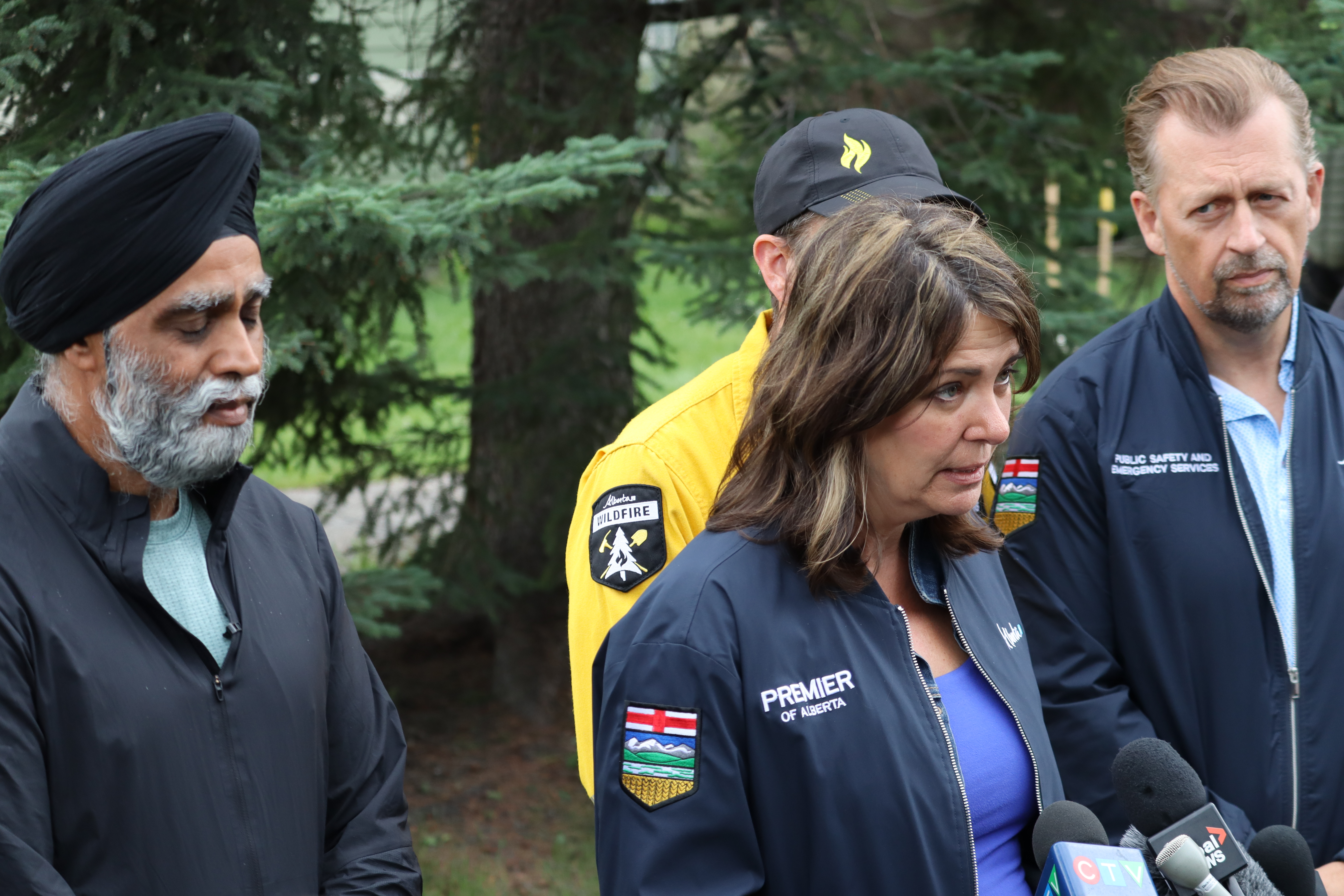
Aug. 5: Leaders vow to rebuild
Prime Minister Justin Trudeau and Premier Danielle Smith pledged their respective governments’ intent to rebuild the historic townsite, a major economic driver for the province and the country.
Smith and Trudeau toured the wildfire response’s command centre in Hinton.
The premier encouraged the federal government to explore an emergency wage subsidy and suspend lease payments for a few months to help businesses avoid layoffs and to consider additional federal funding under the $4 billion Housing Accelerator Fund to help Jasper take on additional land-planning responsibilities.
“Increased local control and resourcing will be crucial to speed up the redevelopment process.”
Aug. 9: Icefield resumes operations
The Columbia Icefields attraction reopened to visitors, and a portion of the southern Icefields Parkway to bring them.
“Opening the Icefields Parkway to the Athabasca Glacier area will provide Canadians and visitors from around the world the opportunity to visit this area and commercial tourism experiences to resume operations,” a Parks Canada spokesperson said, adding the agency would transfer resources from the neighbouring national parks to provide limited services in the area.
Aug. 10: Red Cross deploys
The Red Cross established a response centre in Hinton. It offered critical support services, connected residents with various organizations and provided vital information to help guide their next steps for recovering from the wildfires.
In-person support was also provided to evacuees in Edmonton, Calgary and Valemount, B.C.
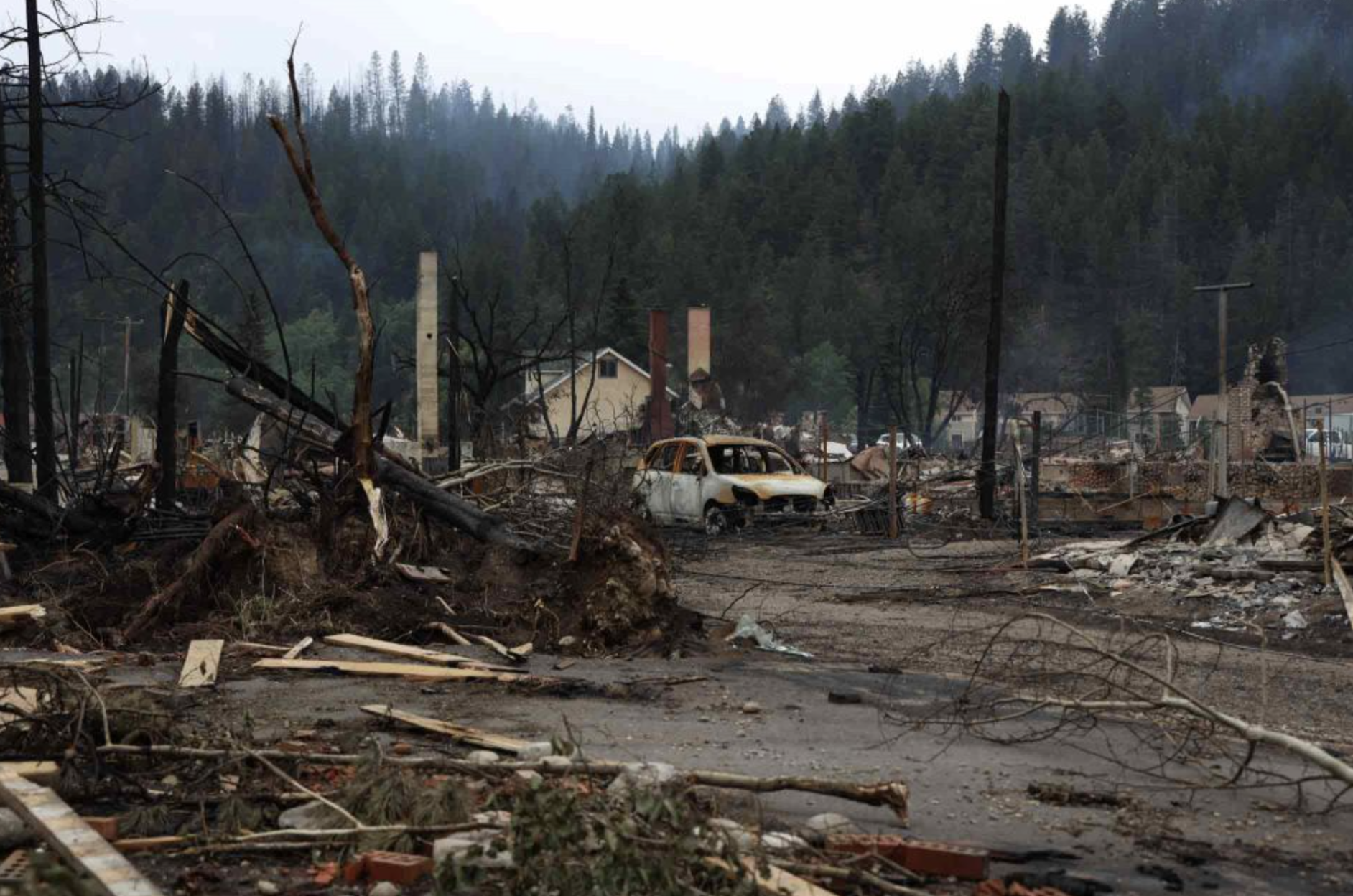
Aug. 11: Smoke sticks around
Highway 16 was closed due to smoke, but progress continued for crews working in the woods. They achieved 89 per cent containment on the fire’s northwest perimeter and established control of the fire at lakes Edith and Trefoil, and at the Fairmont Jasper Park Lodge.
Overall, the fire remained out of control at 33,000 hectares. Parks Canada began the work of reconnecting evacuated campers with the belongings they left in Miette, Snaring and Snaring Overflow campgrounds, which were declared safe for responders to access.
Aug. 13: The relief
Jasper Municipal Council approved a swath of immediate financial relief measures for residents during a special meeting.
Town CAO Bill Given said administration developed these recommendations based on experience from other places and what staff were seeing on the ground in Jasper.
“Obviously, everybody well understands the impact of the wildfire and the destruction of property, and the municipality wants to ensure that we're not increasing the burden on residents and businesses at a very difficult time,” Given said.
Council authorized the immediate suspension of preauthorized tax payments on all damaged or destroyed properties and to defer the collecting property taxes as of July 22. Any penalties on outstanding property tax amounts won’t be applied for July 2024.
Aug. 15: Red Cross redux
Displaced residents already registered with the Red Cross became eligible for another $500 payment. More than 2,600 such individuals received an initial $750 payment Aug. 7.
“The additional financial assistance of $500 per household will help people meet their ongoing needs as they begin their next steps in recovery,” a news release read. “We know the needs of those impacted by the wildfires in Jasper are immense and recovery will take time.”
Aug. 15: Open roads
The Municipality of Jasper said Thursday residents would be allowed to stay in RVs and trailers parked on townsite streets upon their return. Normally, vehicles must be moved at least every 72 hours.
“Wherever possible, we ask that recreation vehicles be parked in residential driveways to reduce congestion on the roadway,” the municipality stated. “During the bylaw adjustment period, Bylaw Officers will manage complaints and address safety or access issues.”
A statement from the municipality coined a new distinction: residents who would be returning to “green zones” unaffected by fire, and their “red zone friends and family.”
The bylaw in question is to come back into force Sept. 15.
Aug. 15: Establishing control
The Jasper Wildfire Complex perimeter is 78 per cent contained or controlled, Parks Canada said, adding the edge of the fire threatening the townsite was at 99 per cent.
With the support of helicopter bucketing, crews extinguished hot spots south of the Palisades and north of the Jasper Transfer Station.
South of Maligne Road, firefighters used natural fire breaks such as rock features and the road to stabilize the fire. Crews worked in the Whirlpool area to prevent further spread to maintain caribou habitat.
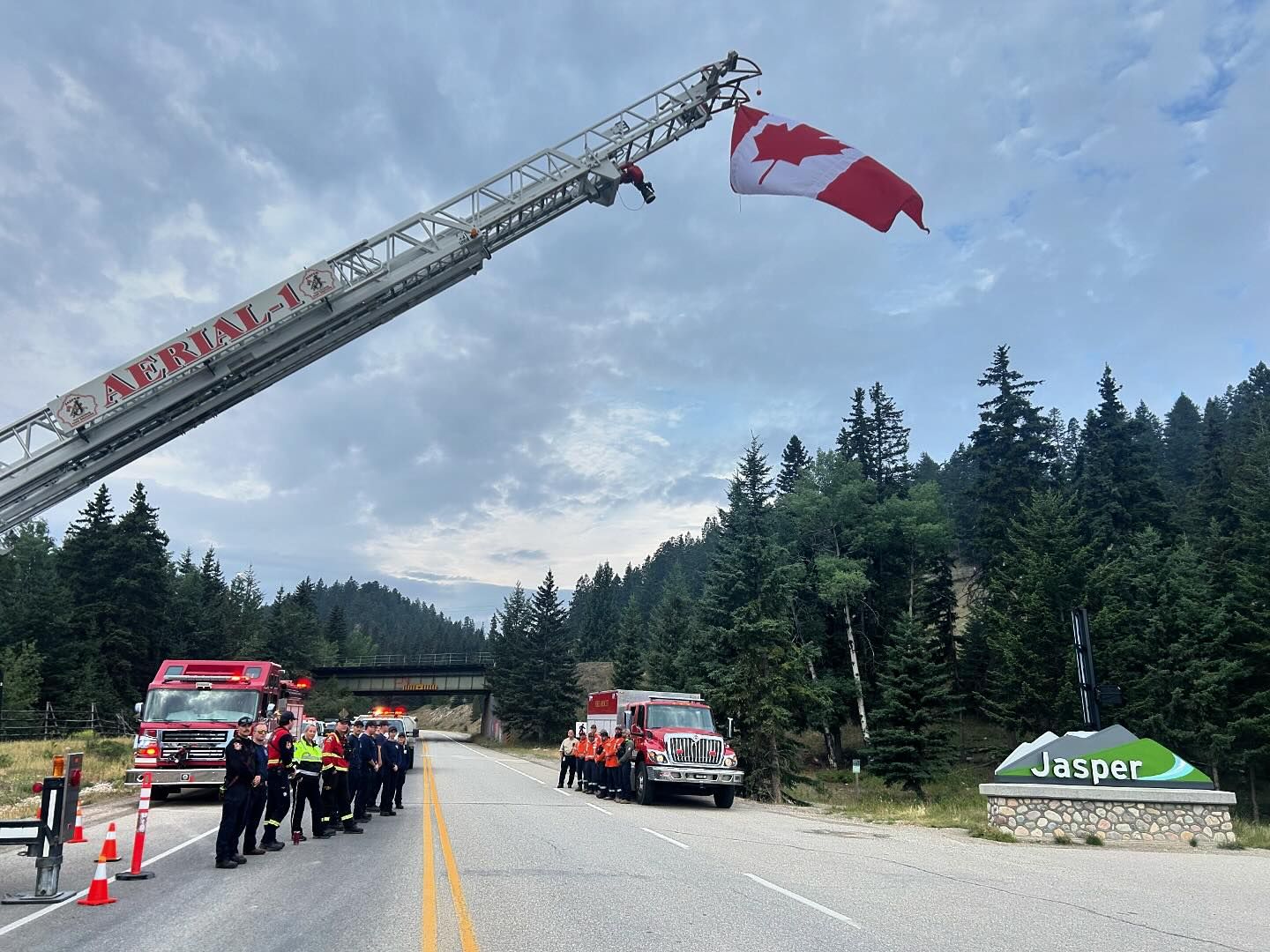
Aug. 16: Return of the Jasperites
As of Thursday, Aug. 15, plans to allow Jasper residents back into the townsite, with the caveat that they would be greeted by only critical retail (gas stations, grocery stores, pharmacies) and limited social services and utility availability.
Residents are to be provided with placards they can place near the address numbers on their home to alert ATCO that they need their gas reignited.

